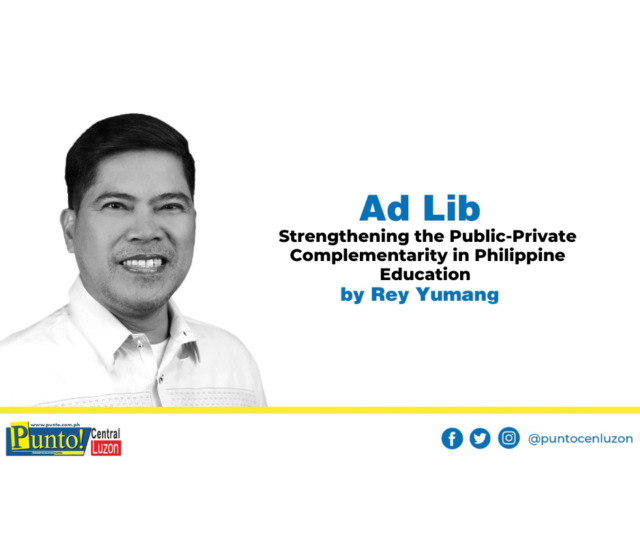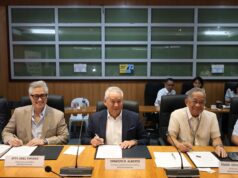THERE IS more than a grain of truth to the observation that public and private schools are not competitors in the country’s educational landscape. True, their students are pitted against each other in many academic, cultural and sports contests. But that’s about it! Contrary to the popular notion, the two play complementary roles – a role that is enshrined in the 1987 Philippine Constitution.
As stated in Article XIV, Section 4 (1), “The State recognizes the complementary roles of public and private institutions in the educational system and shall exercise reasonable supervision and regulation of all educational institutions.”
Ergo, it should not come as a surprise that even the private schools continue to clamor for a highly needed and much-deserved government support to sustain their operations. This need for government support has never been as pronounced after two pandemic school years that saw a number of private schools suspend their operations or worse, shut down completely.
Since 2020, the number of private elementary and high schools nationwide that closed was recorded at 425. Over the past two years, this closure has affected a total of 20,838 students according to Department of Education spokesman Michael Poa.
It is no wonder that many private school administrators are now keeping their fingers crossed on the passage of a bill that aims to amend Republic Act No. 8545 or the Expanded Government Assistance to Students and Teachers in Private Education Law (E-GASTPE). Now pending in Congress for a second reading, the bill is due for deliberations this month. If approved, the government will now provide financial subsidy to private school students from Kindergarten to Grade 6, a benefit previously enjoyed only by junior high school students under the Education Service Contracting (ESC) Program of RA 8545.
One might ask, why should the government support private educational institutions when they are allowed to collect fees from their students?
For one, the government cannot completely fulfill its constitutional duty to promote quality education and to make such education accessible to all its citizens. Can you imagine how chaotic it would be if all school-age Filipinos study in the public schools? In the first place, the public school system cannot accommodate all of them.
The private schools provide a choice, an alternative to students and their parents. The public schools have an oversupply of students, but with limited classrooms and other facilities. On the other hand, the private schools have available classrooms and facilities but with dwindling number of enrollees not enough to sustain their operations.
Given the private schools’ dependence on the collection of school fees, their continued operations and financial stability are in great part determined by the number of enrollees. The government can step in by providing subsidy to the “excess students” from the public schools so they can study in the private schools. Simple as it may sound, this set-up actually promotes the efficiency of the mixed public-private school system in the country.
Aside from the ESC, the Teachers’ Salary Subsidy (TSS) and the Senior High School Voucher Program (SHSVP) are the two other flagship programs being managed by the Private Education Assistance Committee (PEAC).
One look at the data on these three programs is enough to convince our officials that subsidizing the private schools is more cost-effective. Under the TSS, the government gives P18,000 subsidy to a licensed teacher teaching in a private school for an entire year. Compare this to P23,877 – the monthly salary of a Teacher 1 from the public school, with a salary grade 11.
More than half of the schools participating in the ESC charge tuition and other school fees (TOSF) below the estimated GAA cost per student; and almost 9 out 10 private senior high schools charge TOSF below the estimated GAA cost per student.
Come to think of it, it is more costly for the government to build new school buildings and facilities and hire new teachers to meet the steadily growing number of public school students year after year, than to subsidize private schools that pass the rigorous certification process of the PEAC.
Don’t get me wrong. I am all for the continuous support to the plight of our public schools. But the perennial and gargantuan problems besetting our educational system call for desperate measures. The government must continue to tap the private schools as active partners that are ready, willing and capable to do their share in improving the quality of education in our country.





